2019(SE)
Behind Feminist Clothes
art direction | exhibition | graphic design | set design | norm critical
Read our article on Kultwaltch ︎︎︎
Read our article on Kultwaltch ︎︎︎
Today’s fashion industry is glamorizing feminist movements and reducing them to a slogan directly printed on products as marketing tools. But what lies behind these new ways of communicating?
This work explore the relationship between the H&M group using feminism marketing to sell ctlothes, and the working conditions in the factories that make them.
This work explore the relationship between the H&M group using feminism marketing to sell ctlothes, and the working conditions in the factories that make them.

In her lecture Calling Bullsh*t on Faux Feminism as a Marketing Commodity, communications consultant Katie Martell uses the term faux feminism for the exploitation of feminism by the advertising industry. Brands are using feminist narratives to profit from women’s engagement. They have seen an opportunity to sell more products to more women while glorifying their brand image.
We have focused our work on the garment industry, taking the H&M Group as a case study. It is an interesting example as this group has several brands – H&M, COS, WEEKDAY, MONKI, H&M HOME, & other stories, ARKET and AFOUND – all of which communicate in different ways.
We have focused our work on the garment industry, taking the H&M Group as a case study. It is an interesting example as this group has several brands – H&M, COS, WEEKDAY, MONKI, H&M HOME, & other stories, ARKET and AFOUND – all of which communicate in different ways.
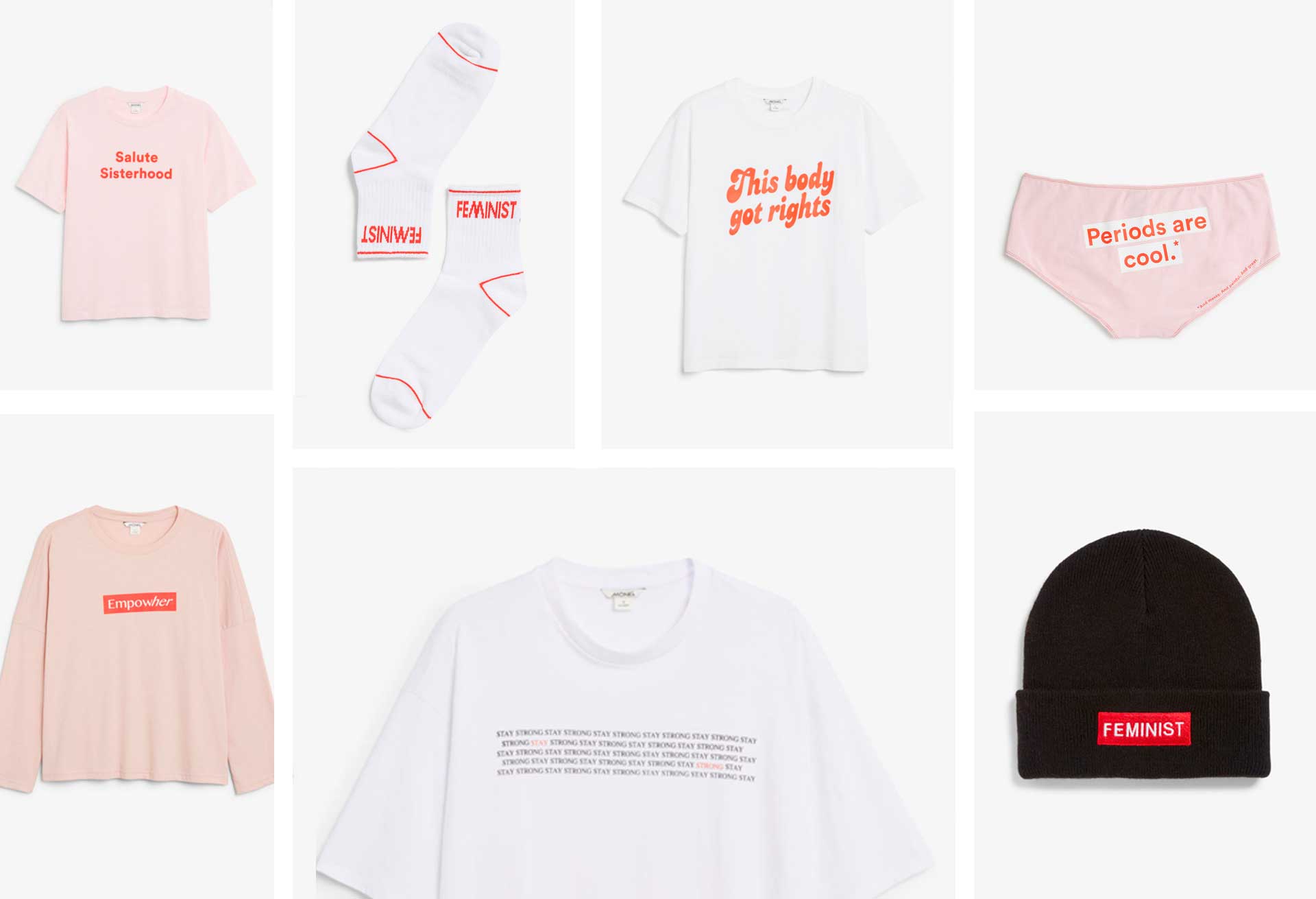 © Exemples of Monki’s feminist garments
© Exemples of Monki’s feminist garmentsOne of their brands, MONKI, is constructed around feminist narratives. The brand uses pale pink, body diversity and feminist statement as part of its identity. For its 10-year anniversary, the campaign Monkifesto highlighted 10 statements, such as “knowledge is queen”, “please yo’self” or “salute sisterhood”.
They were advocating for women’s empowerment and claimed that as their brand values. But what is behind this marketing strategy? Does this company really “empowher” the women working in it? Under what conditions do the women who make these slogan tees really work?
They were advocating for women’s empowerment and claimed that as their brand values. But what is behind this marketing strategy? Does this company really “empowher” the women working in it? Under what conditions do the women who make these slogan tees really work?
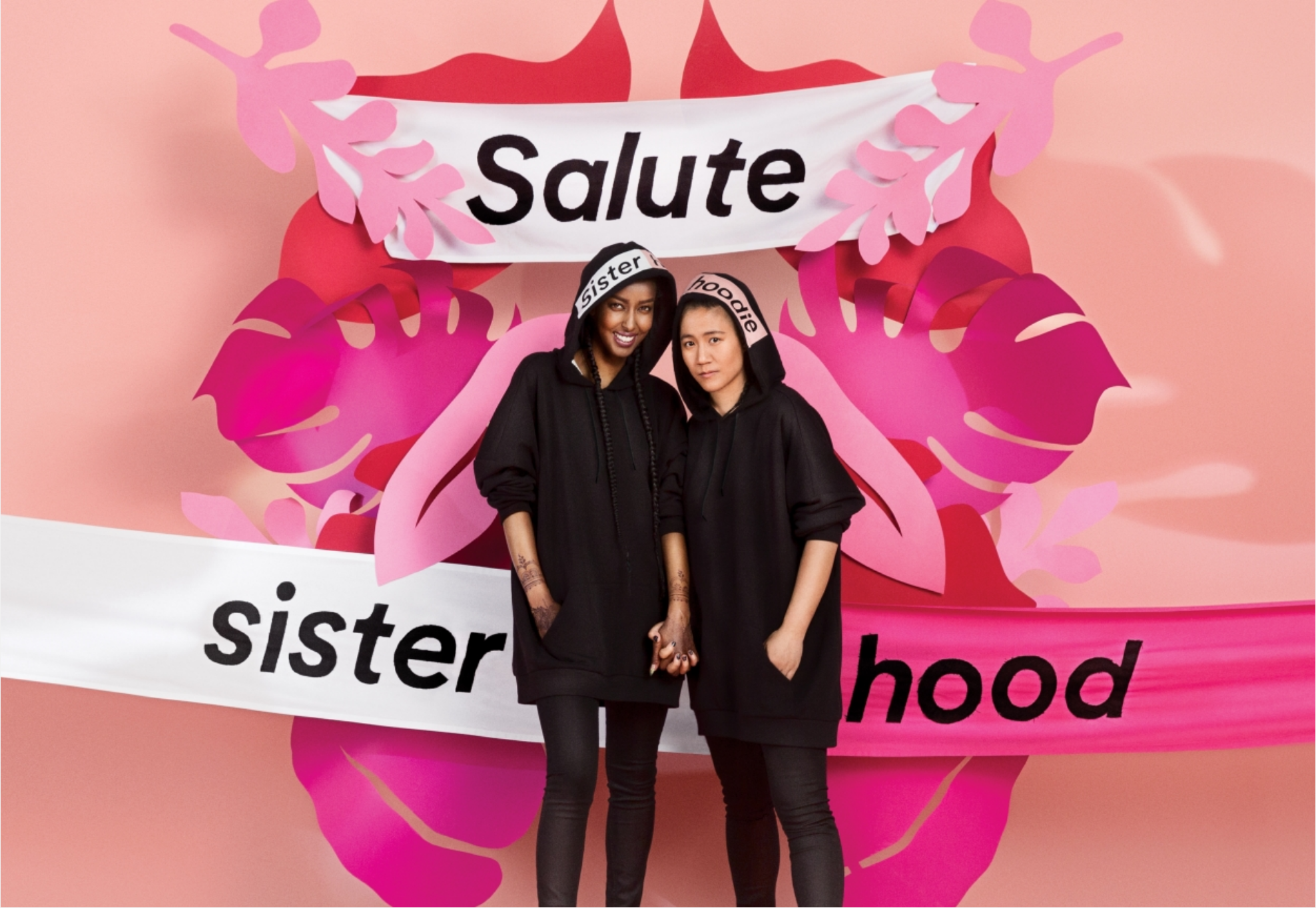




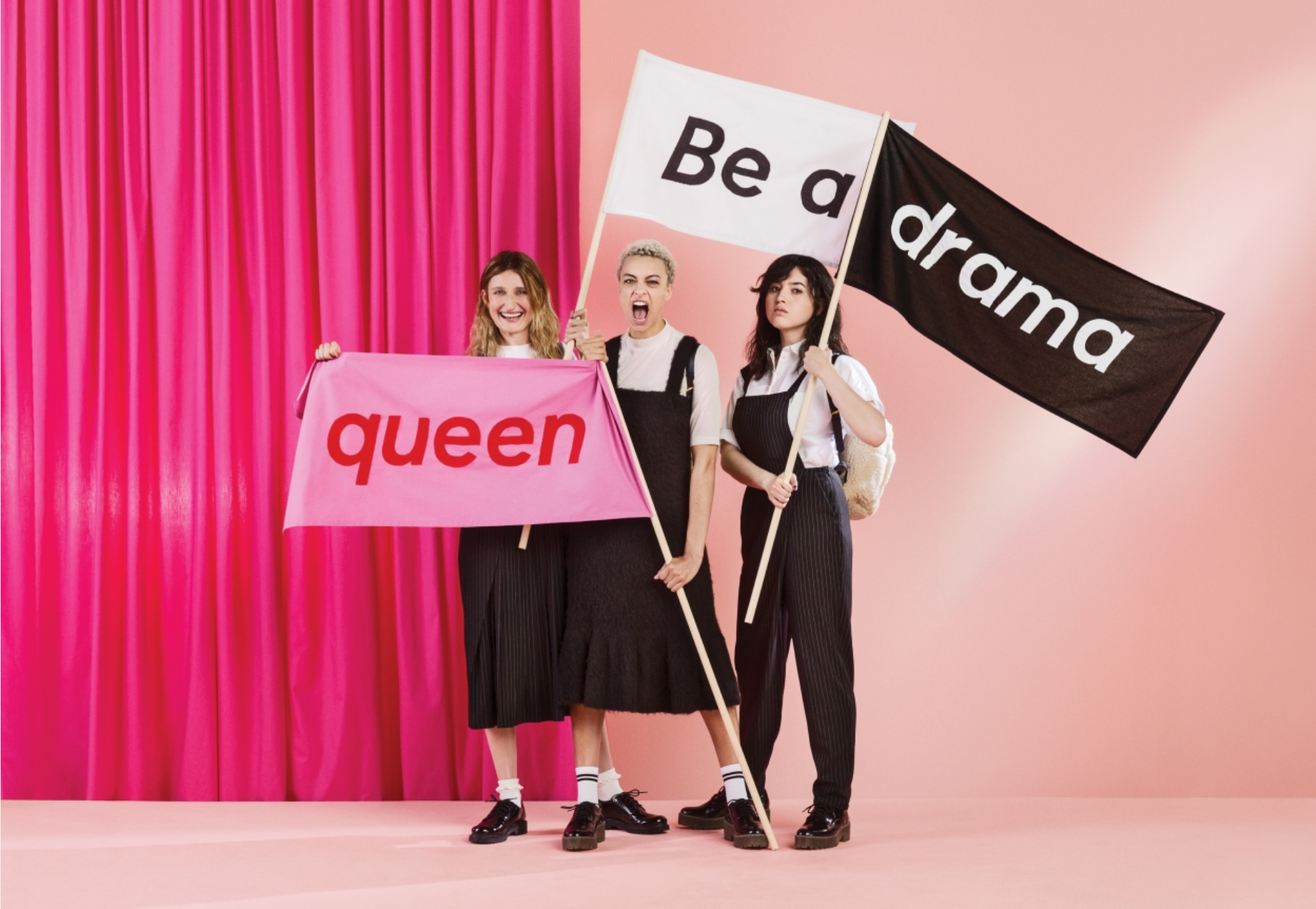





We have hijacked some of the H&M Group garments, the ones with feminist statements. We printed some parts of the report Gender-Based Violence in the H&M Garment Supply Chain, issued by workers’ rights group Asia Floor Wage, on top of the garments’ slogans. The workers’ voices, highlighting violence toward women in their factories, are disconnected from the initial message of the garment, denouncing what is happening inside the company.



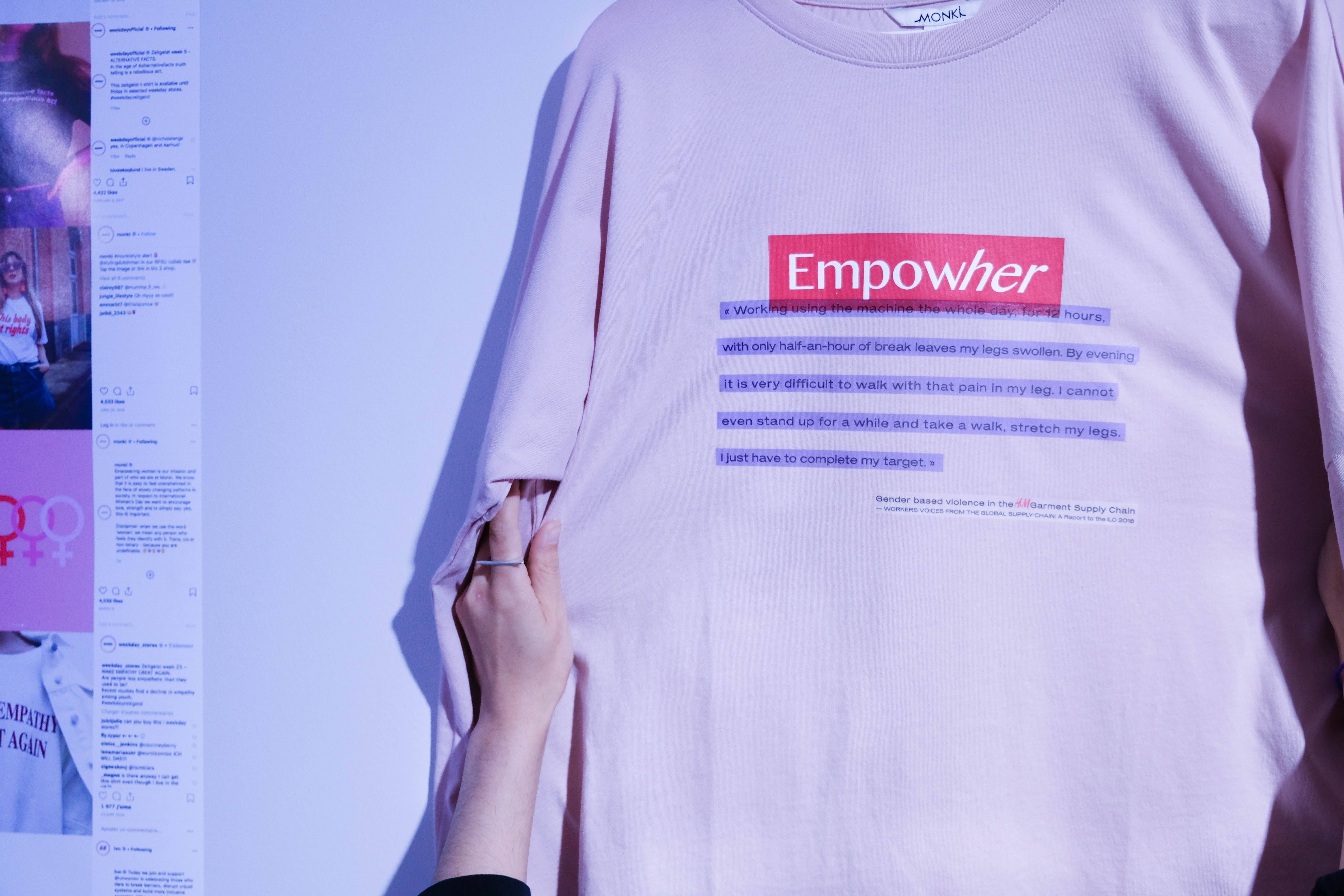
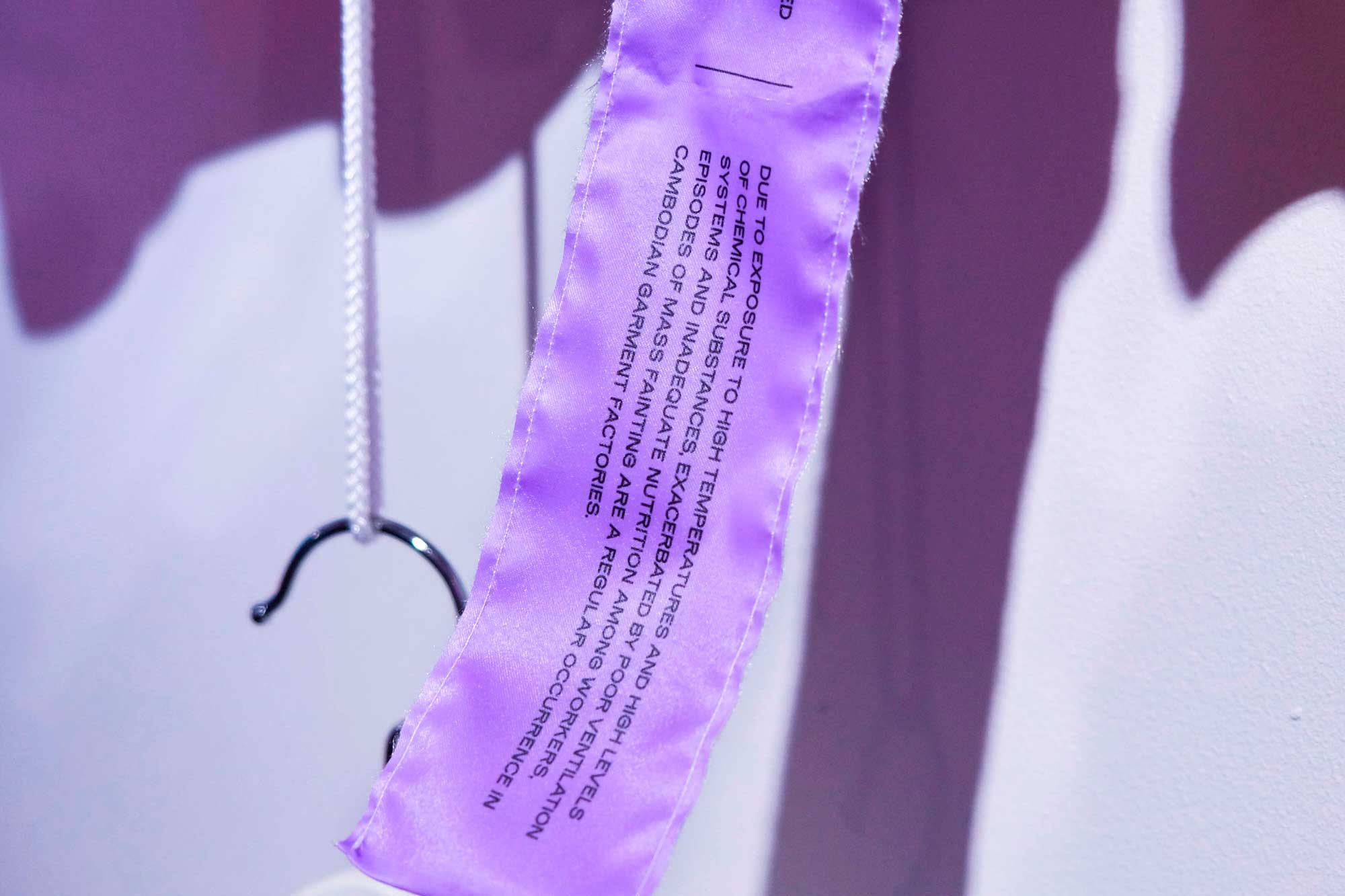

©Print on top of Empowher, Monki T-shirt
(T-shirt by Monki)
Empowher
(Print on T-shirt)
“Working using the machine the whole day, for 12 hours, with only half-an-hour of break leaves my legs swollen. By evening it is very difficult to walk with that pain in my leg. I cannot even stand up for a while and take a walk, stretch my legs. I just have to complete my target.”
Empowher
(Print on T-shirt)
“Working using the machine the whole day, for 12 hours, with only half-an-hour of break leaves my legs swollen. By evening it is very difficult to walk with that pain in my leg. I cannot even stand up for a while and take a walk, stretch my legs. I just have to complete my target.”

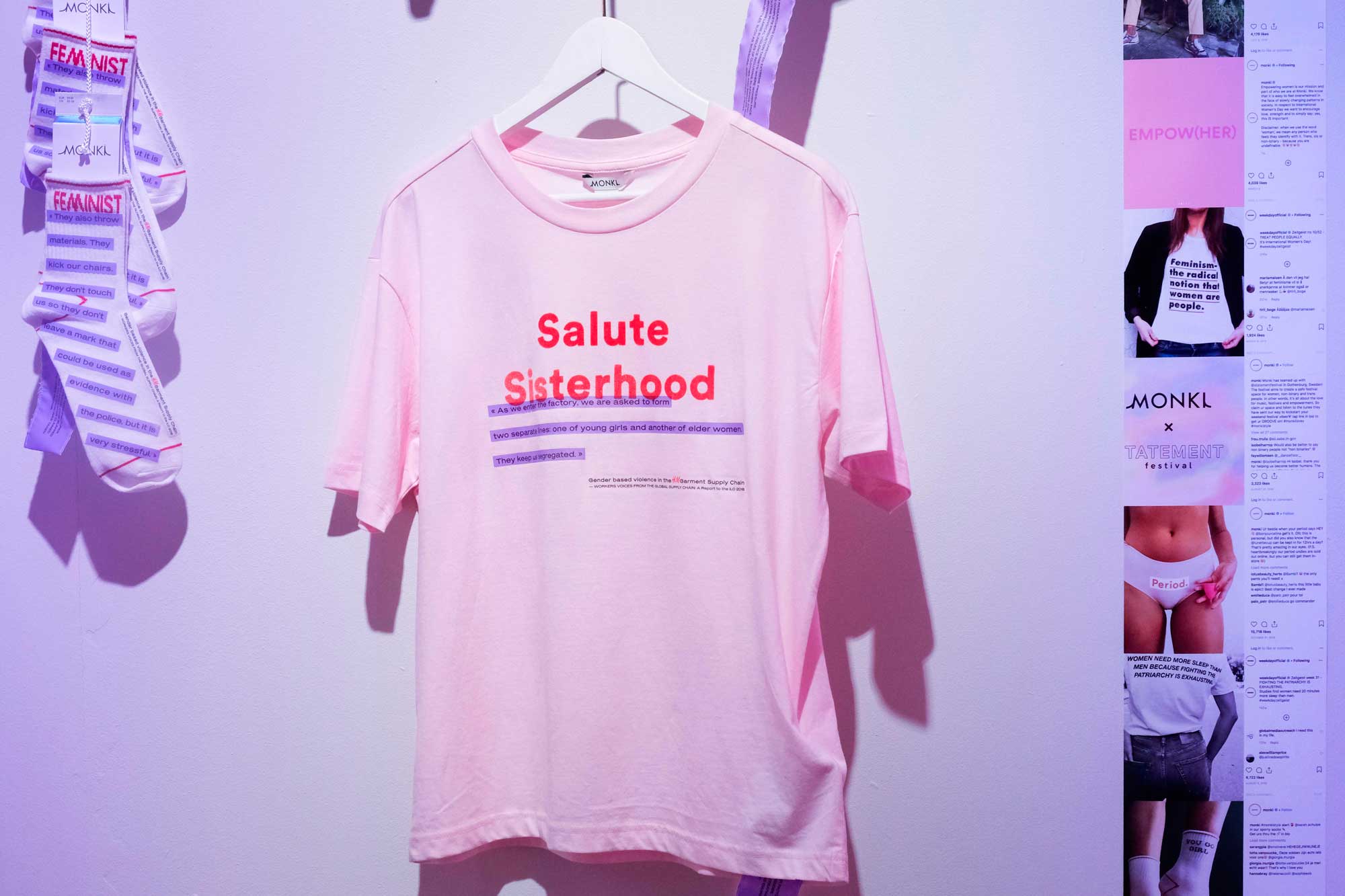

©Print on top of Salute Sisterhood, Monki T-shirt
(T-shirt by Monki)
Salute Sisterhood
(Print on T-shirt)
“As we enter in the foactory, we are asked to form two separate lines, one of youg girls and another of elder women. They keep us segregated.”
Salute Sisterhood
(Print on T-shirt)
“As we enter in the foactory, we are asked to form two separate lines, one of youg girls and another of elder women. They keep us segregated.”
Some employees and customers may think they are contributing to a good cause by selling or buying empowering slogan garments from a company that seems progressive and feminist. They may think that wearing feminist slogans printed on products is one way of engaging in a direct dialogue with the people who react to it and therefore spreading political messages. Also, they may believe that they are a part of a company fighting for equality, standing for feminist values. But in reality, a lot of these companies are just using feminist narratives as marketing tools while enslaving women. It is what Katie Martell has called the illusion of progress.
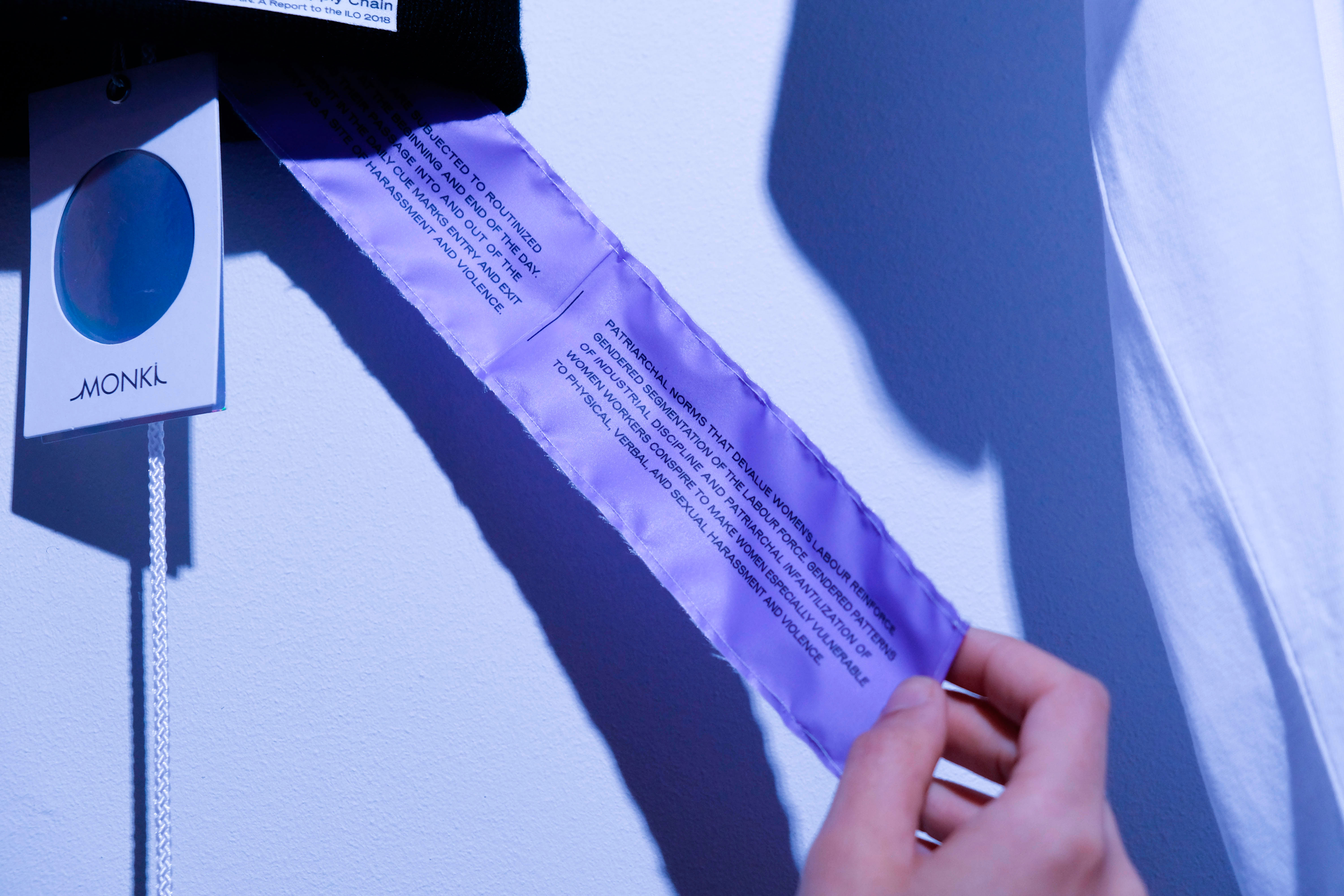

©Print on top of “Feminist” hat by Monki
(Hat by Monki)
Feminist
(Print on hat)
“Girls are harassed by male workers in the factory. I have seen supervisors and mechanics pull their hair, hit their buttocks, and touch their shoulders. This happens a lot when they wait in line to use finger-print machines.”
Feminist
(Print on hat)
“Girls are harassed by male workers in the factory. I have seen supervisors and mechanics pull their hair, hit their buttocks, and touch their shoulders. This happens a lot when they wait in line to use finger-print machines.”
Monki is also collaborating with organisations like RFSU, Mental Health Europe and The Cup Foundation, but is this just a marketing strategy to whitewash their image? One press release states that “female empowerment is at the core of everything we do at Monki. I’m very proud to launch our collaboration with Lunette and The Cup Foundation and to provide young women in Kenya with access to menstrual care and education.” This can be read on Monki’s website, in the section about their campaign “periods are cool”. But what is happening in their factories? Are periods cool for all the women working for them?
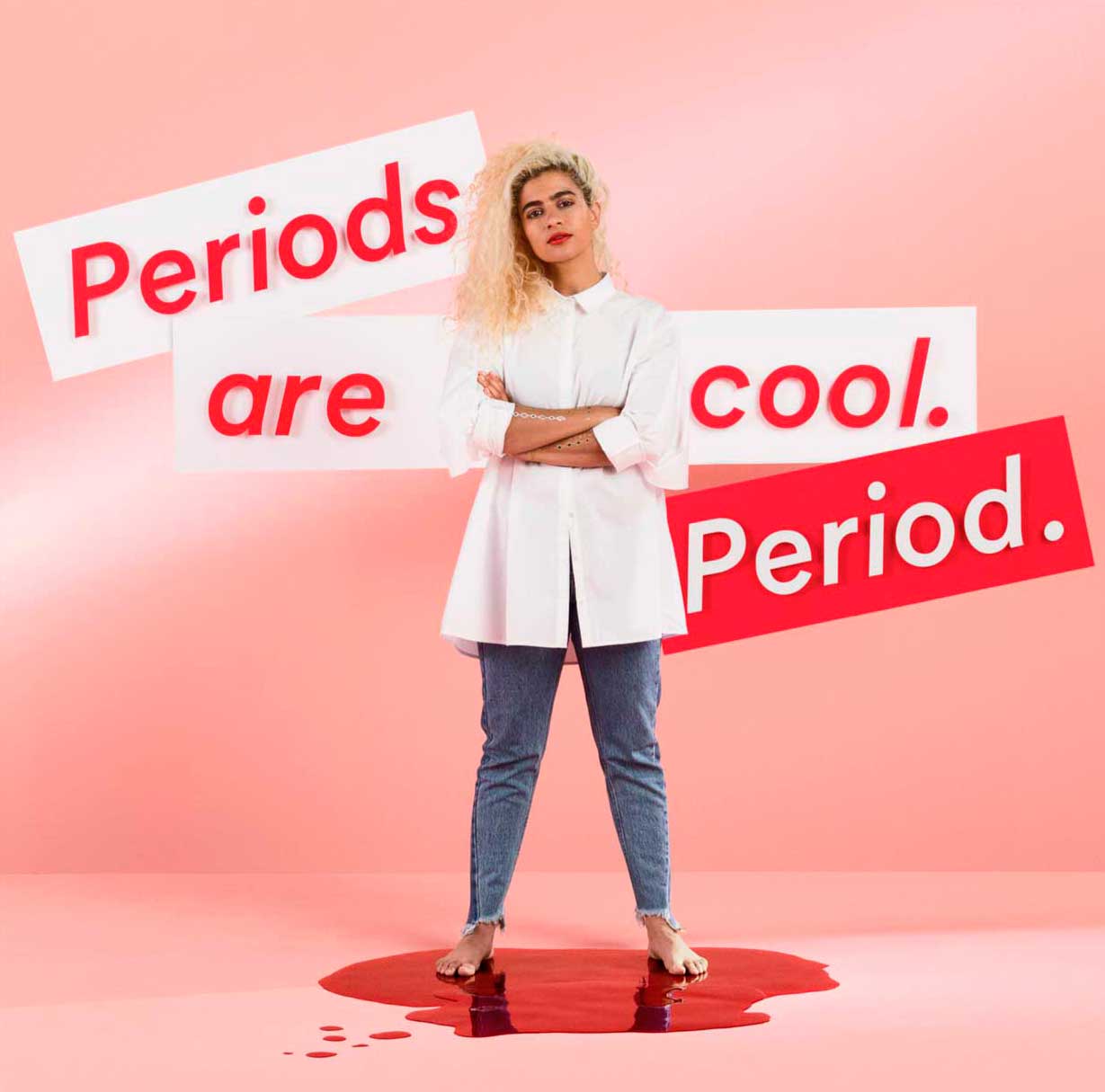 ©Monki Campaign – Period Are Cool
©Monki Campaign – Period Are Cool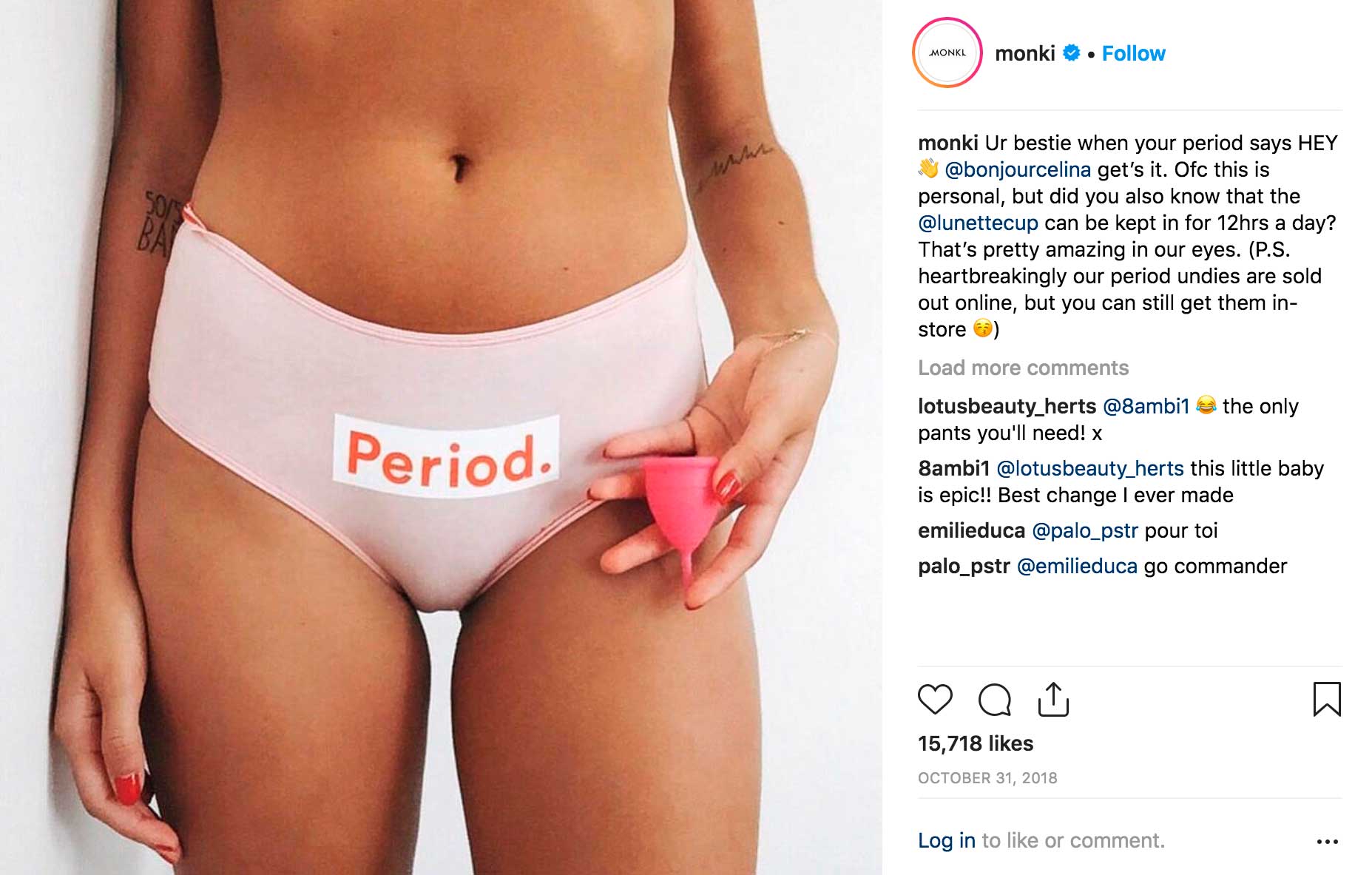
©Instagram Screenshot, Monki Campaign – Period Are Cool
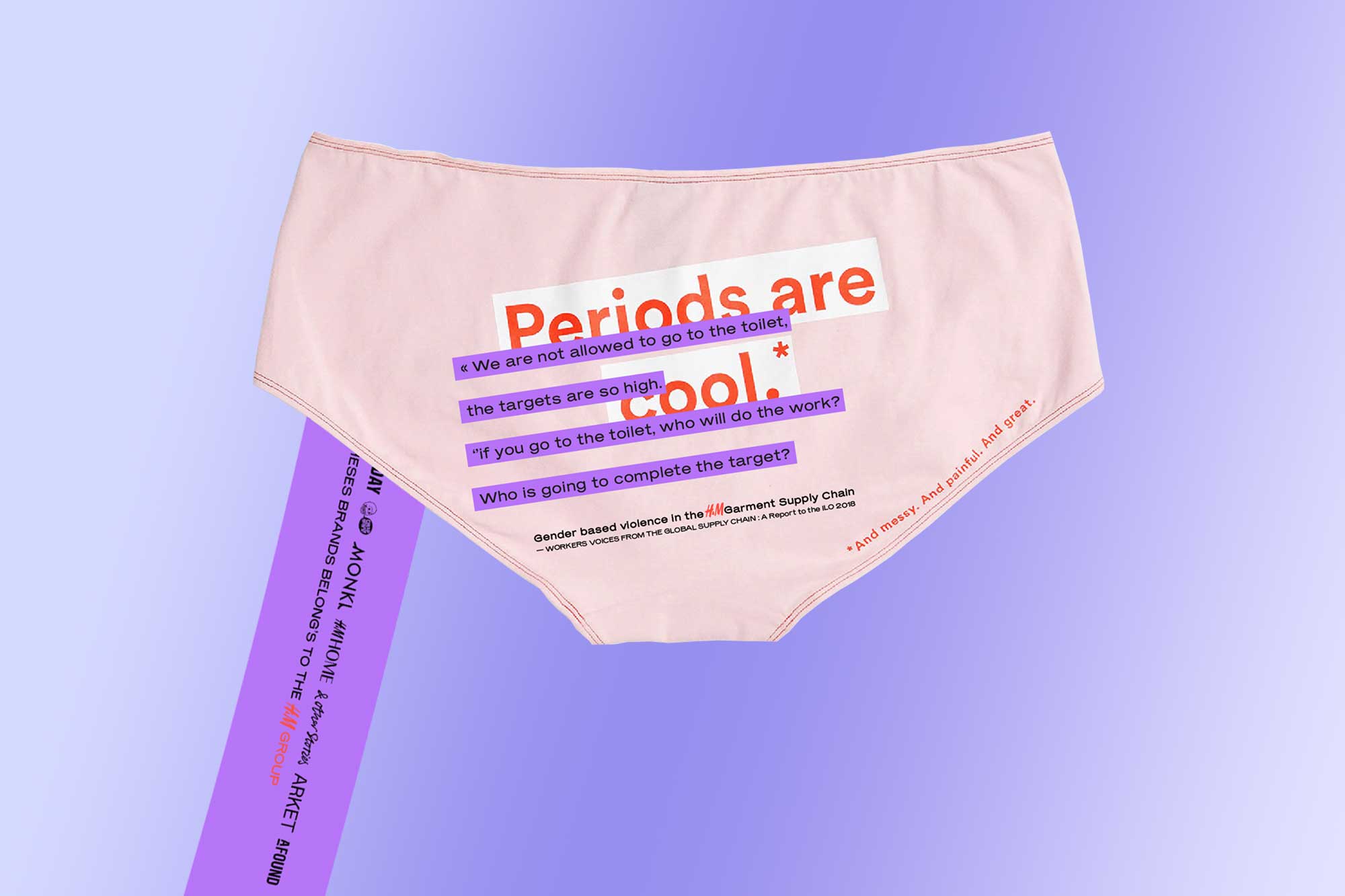 ©Printed on top of “Period Are Cool” underwear by Monki
©Printed on top of “Period Are Cool” underwear by Monki(Underwear by Monki)
Periods are cool.*
*And messy. And painful. And Great.
(Print on underwear)
“Girls are harassed by male workers in the factory. I have seen supervisors and mechanics pull their hair, hit their buttocks, and touch their shoulders. This happens a lot when the y wait in line to use finger-print machines.”
(Label)
Long hours performing repetitive manual task in H&M supplier factories lead to chronic health issues including ergonomic issues such as back pain; reproductive health issues (irregular period and excessive bleeding); and mental health problems including depression and anxiety.
Periods are cool.*
*And messy. And painful. And Great.
(Print on underwear)
“Girls are harassed by male workers in the factory. I have seen supervisors and mechanics pull their hair, hit their buttocks, and touch their shoulders. This happens a lot when the y wait in line to use finger-print machines.”
(Label)
Long hours performing repetitive manual task in H&M supplier factories lead to chronic health issues including ergonomic issues such as back pain; reproductive health issues (irregular period and excessive bleeding); and mental health problems including depression and anxiety.
You cannot empower some women while enslaving others. It is important to connect the products we buy to the women workers’ voices, too often forgotten and hidden by faux feminism used by companies. By superimposing the workers’ voices from some H&M suppliers on top of the H&M’s slogans used as feminist marketing, the reality behind these shiny clothes is revealed. It shows the way fashion industries are capitalising on feminist movements and how companies profit from them.

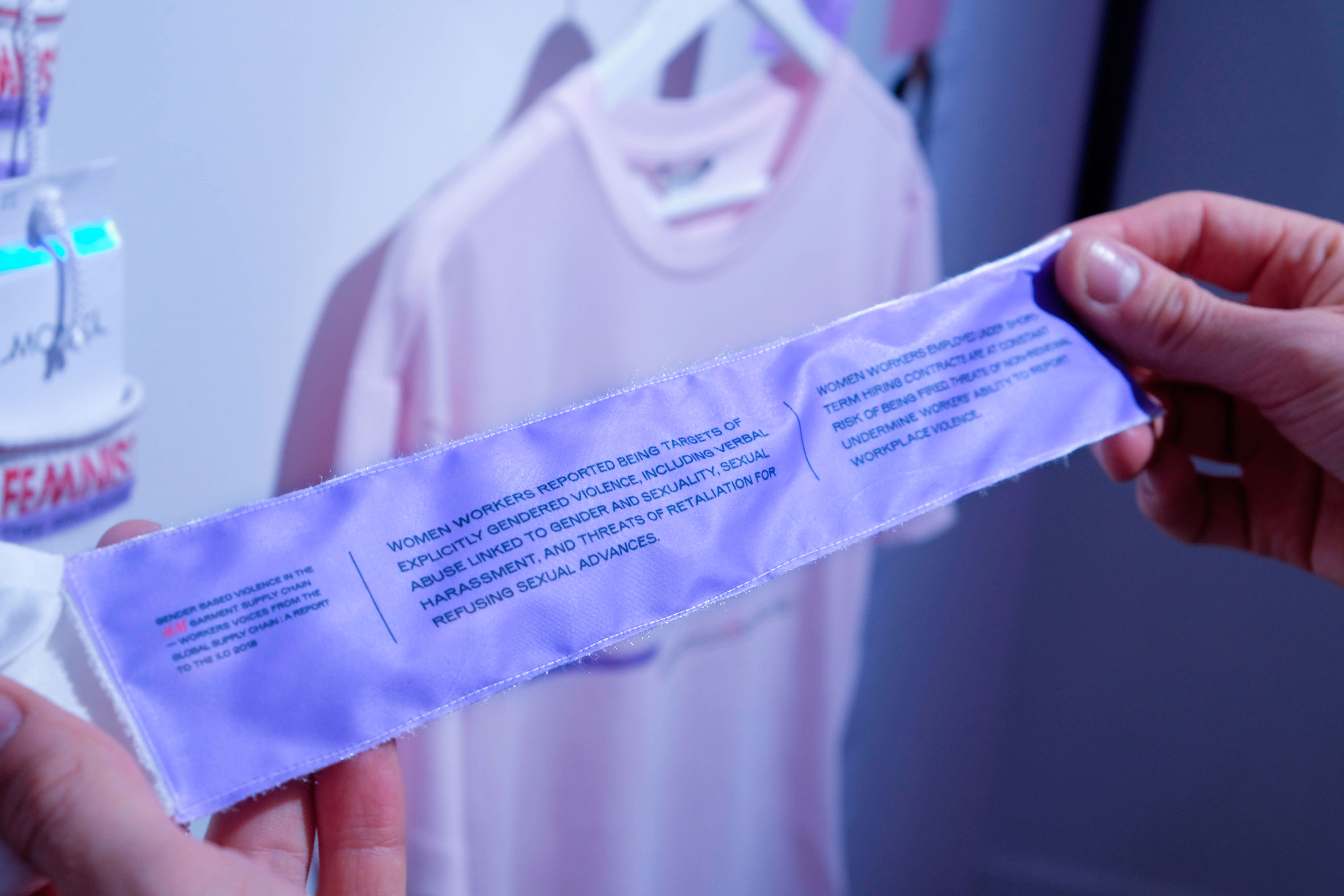

(T-shirt by Monki)
This body got rights
(Print on T-shirt)
“If a woman worker does not meet the sexual desires of the supervisor, she may get more overtime hours. She may not be allowed to take her break. The supervisor will start to find fault with everything she does. She won’t be able to take leave.”
(label)
Women workers reported being targets of explicitly gender and sexuality, sexual harassment, and threats of retaliation for refusing sexual advances.
This body got rights
(Print on T-shirt)
“If a woman worker does not meet the sexual desires of the supervisor, she may get more overtime hours. She may not be allowed to take her break. The supervisor will start to find fault with everything she does. She won’t be able to take leave.”
(label)
Women workers reported being targets of explicitly gender and sexuality, sexual harassment, and threats of retaliation for refusing sexual advances.
Sadly, H&M Group is just an example amongst others. The global North is using the global South to profit from a cheap underpaid workforce. While feminist prints are appearing on mass produced garments, companies are neglecting to deal with their responsibilities in producing inequalities. Fast fashion is dictating the cadence of garment production, making the production targets harder to meet, which consequently brings violence. Apart from a change in the marketing strategies, industries are failing to take action. From underpaid workers to physical violence, the range of oppression and abuse, especially toward women, is deeply ingrained in the fashion industry.
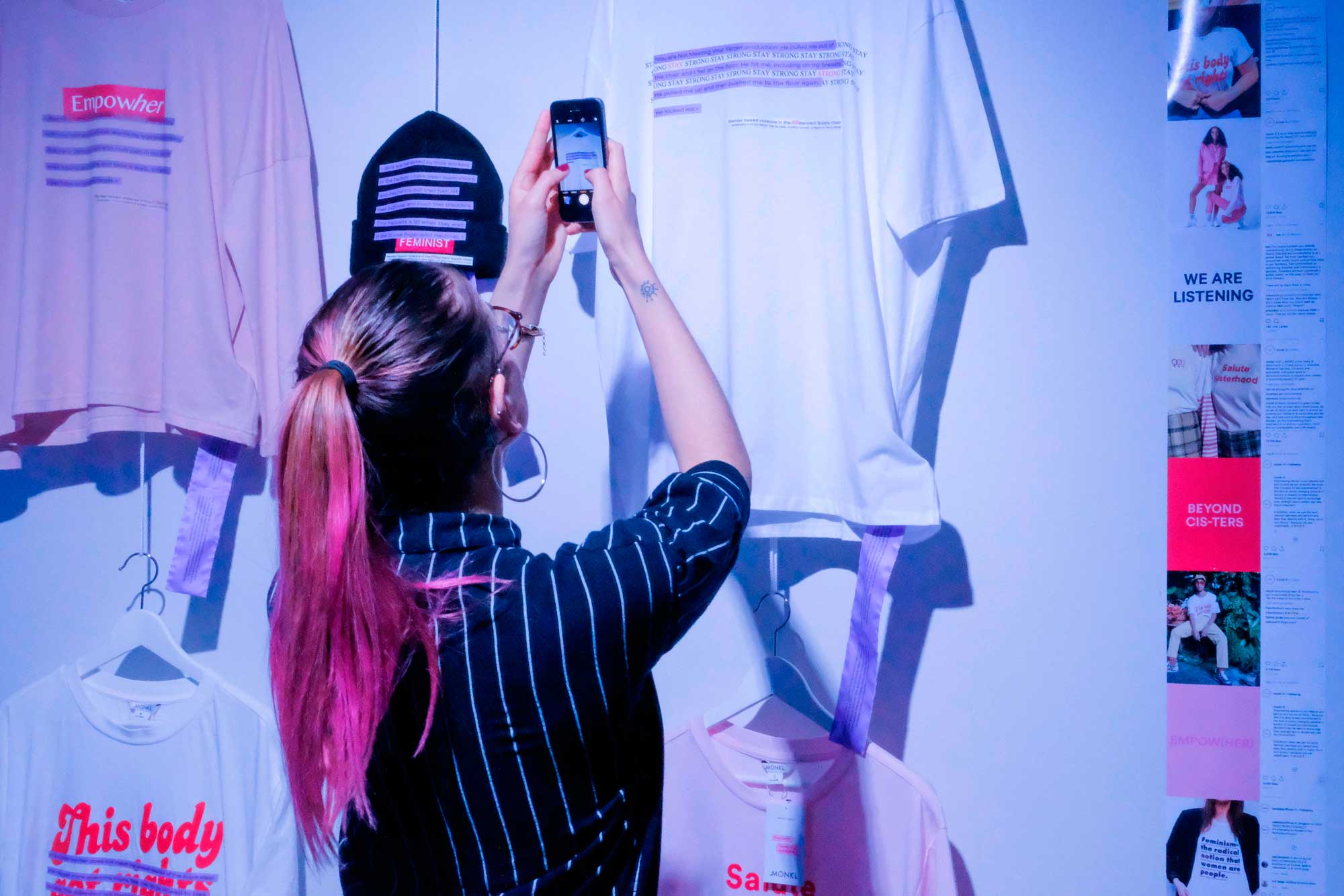
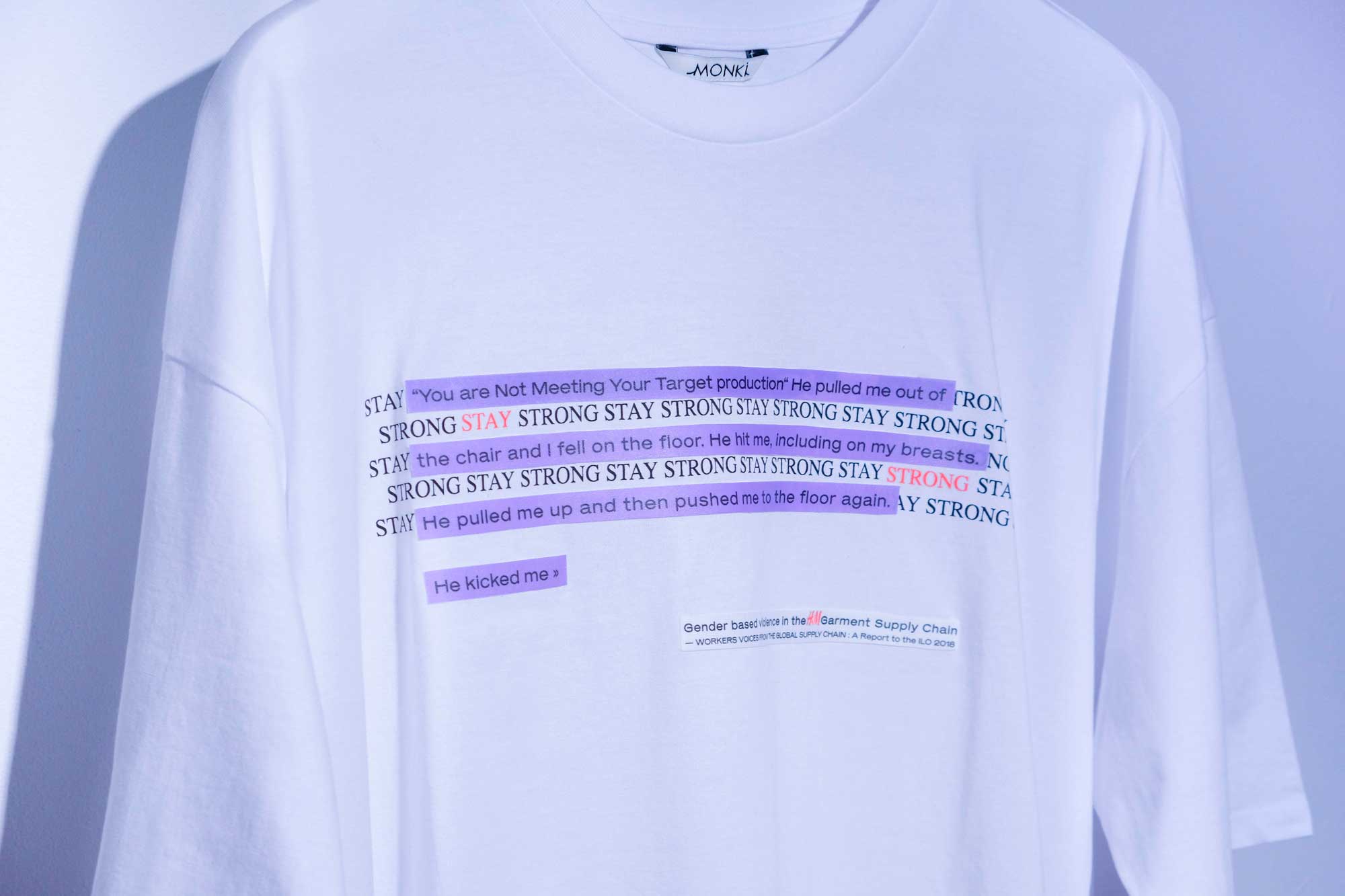
©Purple print on top of Stay Strong, T-shirt by Monki
(T-shirt by Monki)
STAY STRONG STAY STRONG...
(Print on T-shirt)
“You are Not Meeting Your Target production” He pulled me out of the chair and I feel on the floor. He hit me, including on my breasts. He pulled me up and then pushed me to the floor again. He kicked me”
STAY STRONG STAY STRONG...
(Print on T-shirt)
“You are Not Meeting Your Target production” He pulled me out of the chair and I feel on the floor. He hit me, including on my breasts. He pulled me up and then pushed me to the floor again. He kicked me”
They are playing with the naivety and trust of their customers, who are often disconnected and unaware of what is happening in their factories overseas. At the same time as these garments with feminist slogan are sold, women in factories are starving, assaulted, raped and underpaid. While they are opening more shops, for the 2019 financial year around 335 new stores are planned to open, not a single worker is making a living wage.


(Socks by Monki)
Feminist
(Print on socks)
“They also throw materials. They kick our chairs. They don’t touch us so they don’t leave a mark that could be used as evidence with the police, but it is very stressful.”
Feminist
(Print on socks)
“They also throw materials. They kick our chairs. They don’t touch us so they don’t leave a mark that could be used as evidence with the police, but it is very stressful.”
These companies are tricking people with ctheir communication. Let’s give more voices to the workers, let’s take our responsibilities and let’s keep awareness of the workers suffering instead of buying the next trendy tee.
“Whoever, who is going to wear these clothes, I hope they can feel me. I hope they can just give me a chance to be free of this suffering.”
Nasreen Sheikh – Founder & Executive Director: Local women’s handicrafts
Nasreen Sheikh – Founder & Executive Director: Local women’s handicrafts
© 2024